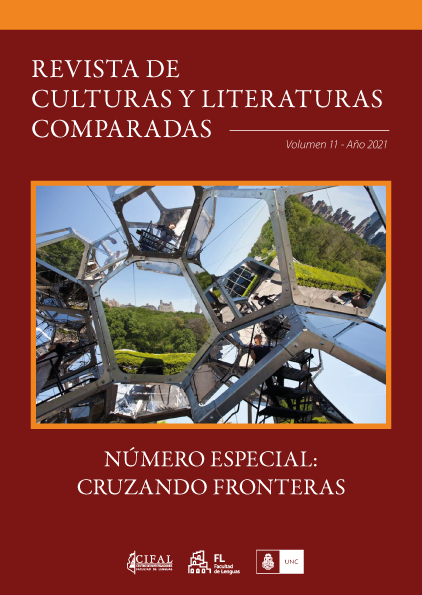Don Juan y el paganismo. Un estudio sobre Don Juan o el amor a la geometría de Max Frisch y Don Juan de Leopoldo Marechal
Keywords:
Don Juan, paganism, Spain, mythAbstract
There are many versions of El Burlador de Sevilla or El Convidado de piedra by Tirso de Molina. Besides, as George Steiner argues as regards the “Antigones”, there is no certainty whether the origin of the plot belongs to only one author, or it was the storyline that transcended the most. Elizabeth Frenzel defines plot as one “storyline” that comes to the author as a way of experience, report or tradition through myth and religion, or as a historical event. This is different from “theme”, which is more abstract, and, to a certain extent, it is deprived of a plot. This paper will analyze the theme of paganism in Don Juan or the geometry of the Swiss author Max Frisch and the Don Juan of the Argentine Leopoldo Marechal. Departing from there, other issues or framing motifs (bearing in mind that they contemplate central motifs such as the licentious man, man and nature, and the man between two women) such as nature, the relationship with women and the myth configuration will also be discussed. Both authors, from different styles and cultures, work with the vulnerability of the character who can hesitate, be moved and cry. Love is mainly related to Don Juan Tenorio de Zorrilla, as Inés does not appear in El Burlador. As regards the myth, Steiner resorts to Jung who affirms that the human psyche generates mythic configurations and characters when trying to achieve integration with some aspects of its primary mode of being. Don Juan is one of those.
Downloads
References
Cárdenas Álvarez, Renato, “El libro de la mitología historias, leyendas y creencias mágicas obtenidas de la tradición oral” y Urquiza Farías, R., “La Salamanca” Diccionario de Mitos y Leyendas - Mithes and Thales Dictionary. Web 30 noviembre 2018.
Durán, T. y del Carmen, M. “El mito de Don Juan en la literatura universal”, Junta de Andalucía – Convenios de colaboración. Consejería de educación. Junta de Andalucía (2016-2017). Web 30 nov. 2018.
Frenzel, Elizabeth. Diccionario de argumentos de la literatura universal. España: Gredos, 1976.
Frisch, Max. “Don Juan o la geometría”, Obras escogidas. España: Aguilar, 1979.
Grau, Jacinto. Don Juan en el tiempo y en el espacio, Bs. As.: Raigal, 1953.
Guardia de Ponté, José de. “El Duende”, Salta: Portal Informativo. Web. 30 nov. 2018. Fecha de creación: 2010
Marechal, Leopoldo. Don Juan, San Antonio de Padua (Bs. As): Castañeda, 1978.
Nieto, Haydeé I., “El “Don Juan” de Marechal: del burlador de Sevilla al duende criolla”, Signos Universitarios. 26 (1994). Web. 30 noviembre 2018.
Pastor, Carles. “Fotos de aves y otras aficiones”. http://www.avesfotos.eu/ Web. 30 nov. 2018.
RAE. Real Academia Española. 2017. Web. 30 nov. 2018.
Steiner, George. Antígonas, Una poética y una filosofía de la lectura, Barcelona: Gedisa, 1996.
Tirso de Molina. El burlador de Sevilla. Barcelona: RBA Coleccionables, 2002.
Published
How to Cite
Issue
Section
License

This work is licensed under a Creative Commons Attribution-NonCommercial-NoDerivatives 4.0 International License.
Aquellos/as autores/as que tengan publicaciones con esta revista, aceptan los términos siguientes:
a) Los/as autores/as conservarán sus derechos de autor y garantizarán a la revista el derecho de primera publicación de su obra, el cual estará simultáneamente sujeto a la Licencia de reconocimiento de Creative Commons.
b) La cesión de derechos no exclusivos implica que la publicación de los artículos en la presente revista no quita la posibilidad o el derecho al autor/a de publicar su obra de manera posterior en otras revistas u órganos editoriales y la autorización por parte de los/as autores/as para que el trabajo sea depositado en los repositorios institucionales, tales como el Portal de Revistas de la Universidad Nacional de Córdoba.



